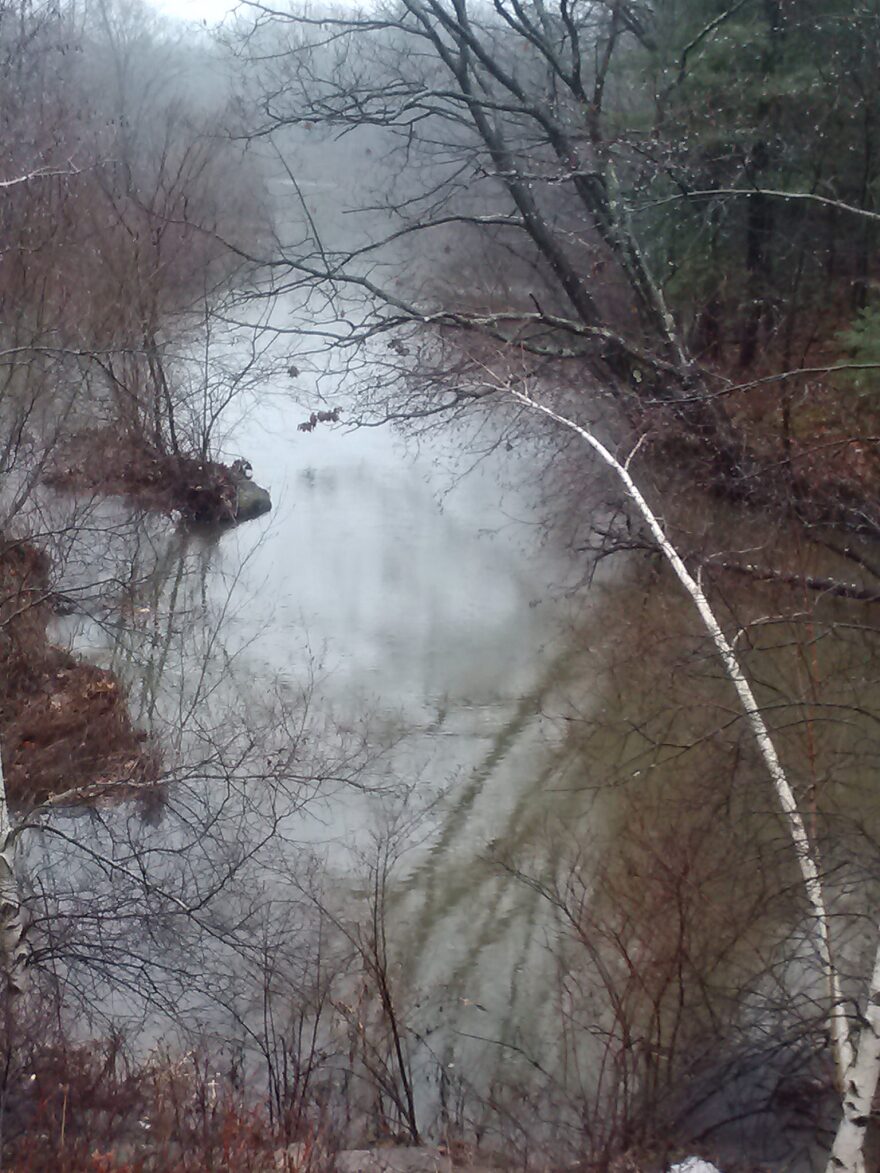SOUTH PORTLAND, Maine - To passing motorists, it probably doesn't seem like much: new trees and grasses planted in the median strip of Gorham Road, a busy, four-lane artery leading to and from the Maine Mall in South Portland. But the new plantings do much more than beautify the road.
They're part of a first-in-the-nation water quality improvement project that is now about five years old. Irwin Gratz has the first of two reports on why it got started and what it has achieved so far.
Most drivers on this stretch of Gorham Road, near the intersection of Western Avenue, probably never notice the quiet stream that flows just below and off to the side of the pavement. The new Gorham Road median plantings are the latest in a series of steps designed to improve the water quality of that stream, Long Creek.
Long Creek, and its four tributaries, form a nearly closed loop that drains water from some of the most heavily developed, and extensively paved, areas in the entire state. The water it collects fills Clark's Pond in South Portland and eventually drains into the Fore River and Casco Bay.
"Clark's Pond used to have fishing contests in it, and they used to actually haul ice out of the pond," says Fred Dillon. "So the water is clean enough for human consumption and for fishing activities."
Dillon is the storm water program coordinator for the city of South Portland. He says once upon a time, the land around Long Creek acted like a sponge, absorbing rainwater and cleansing it of contaminants, including waste from a former pig farm. But then came the Maine Mall, which was followed by other shopping centers, office parks, and wider roads to handle all the traffic.
The development created what engineers call "impervious surfaces" that don't absorb water. In fact, Dillion says it was necessary to get rainwater off those surfaces quickly and into Long Creek.
"That's great for folks who want to get to the mall and keep their feet dry," he says, "but it's not so great for the organisms that live in the stream now, because what used to be a relatively slow release of storm water run-off from a spongy landscape is now like a torrent, or a fire hose, that comes from this heavily developed landscape that has all these impervious surfaces on it."
By 2008, environmental regulators labeled Long Creek, an "urban impaired stream." Property owners needed to go through a permit process, making improvements that would slow, and treat, the storm water run-off into Long Creek.
Discussions were underway when the Conservation Law Foundation asked the federal Environmental Protection Agency to activate a provision of the Clean Water Act that had never been used before.
"By using the Clean Water Act and the potential threat of litigation, we were able to generate this new stakeholder group," says the CLF's Sean Mahoney.
That group became the "Long Creek Restoration Project." Essential to its creation was a single, environmental permit that would cover every property holder willing to take part and pay a per-acre fee. Maine Mall Manager Craig Gorris says joining was in the mall's interest.
"From our standpoint, it didn't make a lot of economic sense to do it alone," Gorris says. "The costs - I wasn't involved with the project back then - but the costs, from my understanding, were significant."
The mall and other owners whose land covers at least an acre, pay a $3,000-per-acre fee. This funds improvements, underway now for years, to address the quality of run-off that eventually reaches Long Creek. The fee currently brings in about $1.5 million a year. Pooling the resources also means the money can be spent on projects throughout the watershed area.
Federal stimulus funding also boosted the effort, paying for a section of porous pavement near the Maine Mall's main entrance, and for construction of a passive treatment area behind Dick's Sporting Goods that handles run-off from the Mall Plaza shopping center.
In Part 2, we look at how the project has affected water quality over the past five years.



